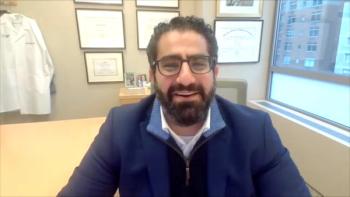
What Factors Can Help Improve the Effectiveness of Pulmonary Rehabilitation in COPD?
Abstracts from the ATS 2021 International Conference provided some insight into tactics that could improve the effectiveness of pulmonary rehabilitation programs in patients with chronic obstructive pulmonary disease (COPD).
Abstracts presented at the
Improving PR Completion
Completion of a PR program has been shown to improve dyspnea, quality of life, and exercise tolerance while reducing the need for hospitalizations in patients with COPD. One abstract1 addressed some of the barriers to completing PR programs, such as lack of insurance coverage, food insecurity, and transportation issues.
The investigators developed a low-intensity COPD wellness program, which incorporated a connection with a health advocate in addition to social support, exercises, and education tactics regularly used in PR programs. The pilot study examined whether the introduction of a health advocate would help patients overcome barriers and complete the program.
Thirty-nine participants with moderate to severe COPD were enrolled in a 10-week pre-post intervention study. The participants’ unmet needs were identified and then they were randomized to a health advocate to help address their needs.
The patients were classified as completers and noncompleters based on if they completed over 50% of classes during the program. They were reassessed 12 months after the intervention.
Among the participants, 51% were randomized to a health advocate and 49% were not. The mean (SD) age of the patients was 64 (1.12) years, and 44% were women.
The completion rate of was 70% in the health advocate group compared with 63% in the control group (P = .2379), demonstrating that addressing unmet needs with a health advocate could be useful in decreasing barriers and improving program completion.
Efficacy of Repeat PR
A second abstract2 showed that repeating a PR program could improve clinical outcomes in patients with COPD compared with completion the program once. Although evidence has shown pulmonary rehab to provide important benefits for patients and the health system, the benefits are often poorly maintained over time.
The investigators conducted a systematic review of studies where participants with COPD underwent pulmonary rehab more than once through October 2020 and identified 2701 references, of which 10 papers were assessed. Overall, 9 studies compared outcomes from a repeat program with those enrolled in a program performed once.
Two randomized controlled trials (RCTs) were identified as having an unclear risk of selection, performance, detection, and reporting bias and had a low risk of attrition bias. The other studies scored between 35% and 95% using the Standard Quality Assessment Criteria, and the meta-analysis was limited to a small number of RCTs and program models that were heterogeneous. Six studies included the time between the first program completion and completion of the repeat PR program (range, 17-45 months).
Measurements of quality of life improved between the completion of the initial program and the repeat program, demonstrating a mean difference (MD) in St George Respiratory Questionnaire scores from 3 studies (n = 222) ranging from –4 to 4. Additionally, the MD in total scores from the Chronic Respiratory Disease Questionnaire detailed in 2 studies (n = 163) ranged from 3.4 to 5.3.
Between the initial program and the repeat program, exercise capacity also improved, with the MD for distance during a 6-minute walk test (4 studies; n = 233) growing from 5 to 32 meters and that for incremental shuttle walk tests (2 studies; n = 141) increasing from 13 to 18 meters.
In 1 study, a reduction in mean (SD) exacerbations was observed between the year prior to the initial program and the year following the initial and repeat programs: 2.5 (0.9) vs 0.81 (0.71) and 0.81 (0.73), respectively (P < .001).
Reference
1. Seijo LL, Patrick EC, Su G, Thakur N. Improving completion to pulmonary rehabilitation: A pilot study. Presented at: ATS 2021 International Conference; May 14-19, 2021. Abstract A4145.
2. Burge A, Shiell A, Mcdonald C, et al. Efficacy of repeat pulmonary rehabilitation in people with COPD: A systematic review. Presented at: ATS 2021 International Conference; May 14-19, 2021. Abstract A4142.
Newsletter
Stay ahead of policy, cost, and value—subscribe to AJMC for expert insights at the intersection of clinical care and health economics.















































